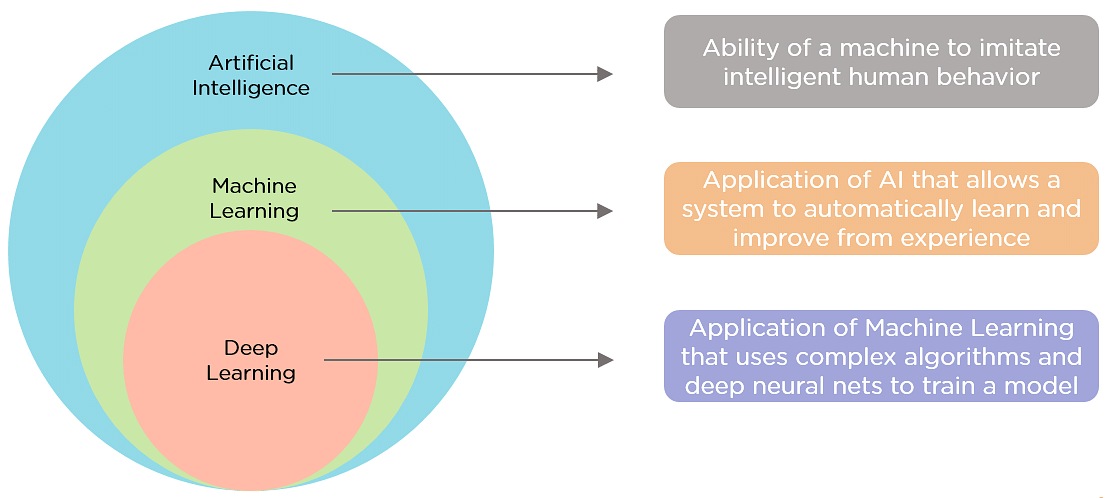Artificial Intelligence (AI) is rapidly transforming the world around us. From autonomous vehicles and personalized healthcare to smart assistants and automated hiring systems, AI is making decisions that influence lives, economies, and societies. These algorithms are no longer just tools—they are actors in our digital ecosystems, shaping outcomes that matter. Yet, despite their power, many AI systems operate as inscrutable “black boxes,” producing outputs that even their creators struggle to explain.
Enter Explainable AI (XAI)—an emerging field that seeks to open the black box, revealing the rationale behind AI decisions in a way that humans can understand. In a world increasingly governed by algorithms, explainability is no longer a luxury or academic ideal—it is a moral, legal, and practical imperative.
But what exactly is explainable AI? Why is it so essential for trust? How do we reconcile machine efficiency with human comprehension? This deep-dive article explores the science, philosophy, and societal importance of XAI, peeling back the layers of complexity to show why explainability is the key to responsible AI.
Understanding AI’s Black Box Problem
At the heart of the AI revolution lies machine learning, particularly deep learning—a type of AI modeled loosely after the human brain. These systems can learn patterns in massive datasets and make accurate predictions or classifications. A neural network, for instance, might have millions of interconnected parameters, trained through iterative algorithms to identify patterns in data.
However, this complexity comes at a cost. Unlike traditional software, where every decision path is hard-coded and traceable, AI models often develop their own internal logic that defies straightforward interpretation. This opacity is what gives rise to the “black box” problem.
When a bank’s AI denies a loan, or a healthcare algorithm recommends one treatment over another, or a self-driving car swerves into oncoming traffic, stakeholders want to know: why did it do that? If we cannot answer that question, trust evaporates—especially when lives or livelihoods are at stake.
What Is Explainable AI? A Clear Definition
Explainable AI refers to systems that make decisions or predictions in a way that can be understood, interpreted, and trusted by humans. The goal is to make AI models transparent, so their inner workings can be inspected, audited, and corrected if needed.
There are different levels and types of explainability. Some systems are inherently interpretable, such as decision trees or linear regressions, where the logic is transparent. Others use post-hoc explanation methods—tools that analyze a complex model’s outputs to generate understandable insights.
At its best, XAI should enable multiple stakeholders—developers, users, regulators, and impacted individuals—to answer critical questions: What did the AI do? Why did it do that? Can I trust it? What would happen if I changed the input? Can I challenge the result?
Explainability is not merely a technical challenge; it’s a design principle, a communication strategy, and a philosophy of transparency that must be embedded in every stage of AI development.
The Human Factor – Why Trust Matters
Trust is the cornerstone of human relationships—and it’s just as vital when the decision-maker is a machine. If users don’t understand how AI works or believe it to be biased, unfair, or unpredictable, they will resist using it. Worse, they may misuse or overtrust it in ways that cause harm.
Consider the case of medical AI. If a diagnostic algorithm recommends a specific treatment plan, but cannot explain its reasoning, doctors may hesitate to follow its advice—or follow it blindly. In either case, the lack of explanation undermines safety and accountability.
Trust is also key in justice systems, financial institutions, hiring platforms, and any context where decisions impact rights, freedom, or access. In such high-stakes domains, blind faith in AI is dangerous. Transparency, supported by XAI, enables critical scrutiny, informed consent, and ethical oversight.
Moreover, explainability supports controllability—the ability of humans to override, intervene, or adjust an AI system. This is essential in ensuring that AI remains our servant, not our master.
The Risks of Unexplainable AI
The consequences of unexplainable AI are not hypothetical—they are real and mounting. In recent years, multiple scandals have highlighted the dangers of opaque algorithms.
In one case, an AI used in criminal sentencing was found to be racially biased, yet its decision process was a trade secret, hidden from defendants. In another, a university admissions algorithm downgraded students based on school reputation and demographic data, causing widespread backlash.
These failures reveal a dangerous pattern: AI systems can encode and amplify societal biases, and without transparency, these injustices are hard to detect or correct.
Beyond fairness, opacity undermines accountability. Who is responsible when an AI makes a mistake? The developer? The deployer? The data provider? When decisions are inscrutable, it becomes difficult to assign responsibility or seek redress.
Lack of explainability also impedes debugging and improvement. Developers need to understand why a model failed to improve it. If they can’t interpret its reasoning, they are flying blind, leading to stagnation or unintended consequences.
Methods of Explainable AI
Creating explainable AI is both an art and a science. There are two main strategies: intrinsic interpretability and post-hoc explainability.
Intrinsic interpretability refers to using models that are inherently understandable. These include decision trees, linear models, and rule-based systems. Their simplicity makes them transparent, but often at the cost of accuracy in complex tasks.
Post-hoc methods aim to explain complex models after the fact. These include techniques like:
- LIME (Local Interpretable Model-agnostic Explanations): Creates simpler surrogate models around individual predictions to show what influenced the decision.
- SHAP (SHapley Additive exPlanations): Uses game theory to quantify the contribution of each feature to the output.
- Saliency maps and heatmaps: Visual tools often used in computer vision to show which parts of an image the AI focused on.
- Counterfactual explanations: Show how small changes in input could have led to a different outcome—e.g., “If you had made $3,000 more per year, your loan would have been approved.”
There’s no one-size-fits-all solution. The choice of explanation method depends on the use case, the audience, and the trade-offs between complexity and clarity.
Legal and Ethical Imperatives
Explainability is not just a technical challenge—it’s a legal and ethical necessity. As AI becomes embedded in public and private decision-making, lawmakers and regulators are demanding transparency.
In the European Union, the General Data Protection Regulation (GDPR) grants individuals a “right to explanation” when subjected to automated decisions. Other jurisdictions are developing similar rules, recognizing that opacity can lead to discrimination, exploitation, or abuse.
Ethically, explainability supports human dignity, autonomy, and justice. People have a right to understand how decisions about their lives are made—and to contest them when they seem unfair.
Ethical AI frameworks from organizations like the OECD, UNESCO, and IEEE all emphasize explainability as a core principle. It is inseparable from fairness, privacy, and accountability.
As AI becomes more powerful, the ethical imperative grows stronger. A superhuman AI that no one can understand is not a breakthrough—it’s a breakdown in human-centered design.
The Limits and Trade-offs of Explainability
Despite its importance, explainability has limits. Not all complex systems can be easily reduced to human-understandable terms. Sometimes, making a model explainable means sacrificing performance or introducing bias through oversimplification.
There’s also a tension between transparency and security. Revealing how an AI works can make it easier to manipulate, hack, or game the system. For instance, explaining a spam filter in detail might help spammers evade it.
Furthermore, different stakeholders require different kinds of explanations. A developer may want a technical breakdown, a regulator needs a compliance-focused summary, while a layperson just wants a plain-language rationale. Balancing these needs is challenging.
Explainability also raises philosophical questions: What does it mean to “understand” a decision? Is a simplified story an explanation, even if it hides complexity? Can a statistical pattern truly “explain” human behavior?
These challenges don’t negate the need for XAI—but they call for humility, nuance, and continued innovation.
XAI in Practice – Real-World Applications
In healthcare, explainable AI is being used to support diagnostics, predict patient outcomes, and personalize treatments. Clinicians demand transparency to ensure recommendations align with medical ethics and evidence. Tools like IBM Watson and Google DeepMind have emphasized interpretability to earn user trust.
In finance, explainable models help assess creditworthiness, detect fraud, and guide investment. Regulators require financial institutions to justify algorithmic decisions to prevent discrimination and ensure fairness.
In criminal justice, explainability is crucial in risk assessment tools used for bail and sentencing. Without transparency, these tools risk perpetuating bias and violating due process.
In autonomous vehicles, AI must explain its decisions to developers, regulators, and accident investigators. Why did the car accelerate? Why did it fail to brake? These questions demand answers for safety and liability.
In hiring, AI tools used to screen resumes or rank candidates must be explainable to prevent hidden discrimination and allow for auditability.
The list goes on—education, military, agriculture, customer service—all are being reshaped by AI. In each case, explainability is the bridge between human values and machine intelligence.
The Future of Explainable AI
Explainable AI is still a young field, but it is evolving fast. Researchers are working on hybrid models that combine the power of deep learning with the transparency of symbolic reasoning. Others are developing interactive AI systems that engage users in dialogue, allowing for questions, clarifications, and adjustments.
Some envision a future where AI systems come with built-in narratives, capable of describing their reasoning in natural language, adapting to the user’s level of expertise. Others propose new visual metaphors, like “thought maps” or “decision flows,” to make abstract processes tangible.
Advances in causal inference and probabilistic programming may also help AI models move beyond correlations to explanations grounded in causality—answering not just “what happened?” but “why?”
The rise of generative AI, like large language models, adds both challenges and opportunities for XAI. While these models are even more complex, they also offer new ways to generate explanations and simulate counterfactuals.
Ultimately, the future of XAI lies in collaboration—between engineers, ethicists, psychologists, designers, regulators, and users. It’s not just about making AI smarter—it’s about making it understandable, usable, and humane.
Conclusion: From Black Boxes to Glass Boxes
Explainable AI is not a fringe concern—it is central to the future of trustworthy, responsible, and ethical artificial intelligence. In a world where algorithms make decisions with real consequences, explainability is the key to transparency, accountability, and justice.
It transforms AI from a mysterious oracle into a partner in human decision-making. It empowers users, protects rights, prevents harm, and builds the trust that AI systems need to thrive in society.
The journey from black boxes to glass boxes will not be easy. It will require innovation, regulation, and education. It will demand that we prioritize understanding over mere performance, and that we design AI not just to work—but to explain itself.
In doing so, we will ensure that AI serves humanity not blindly, but wisely—and that we remain not just users of intelligent machines, but stewards of their meaning.






